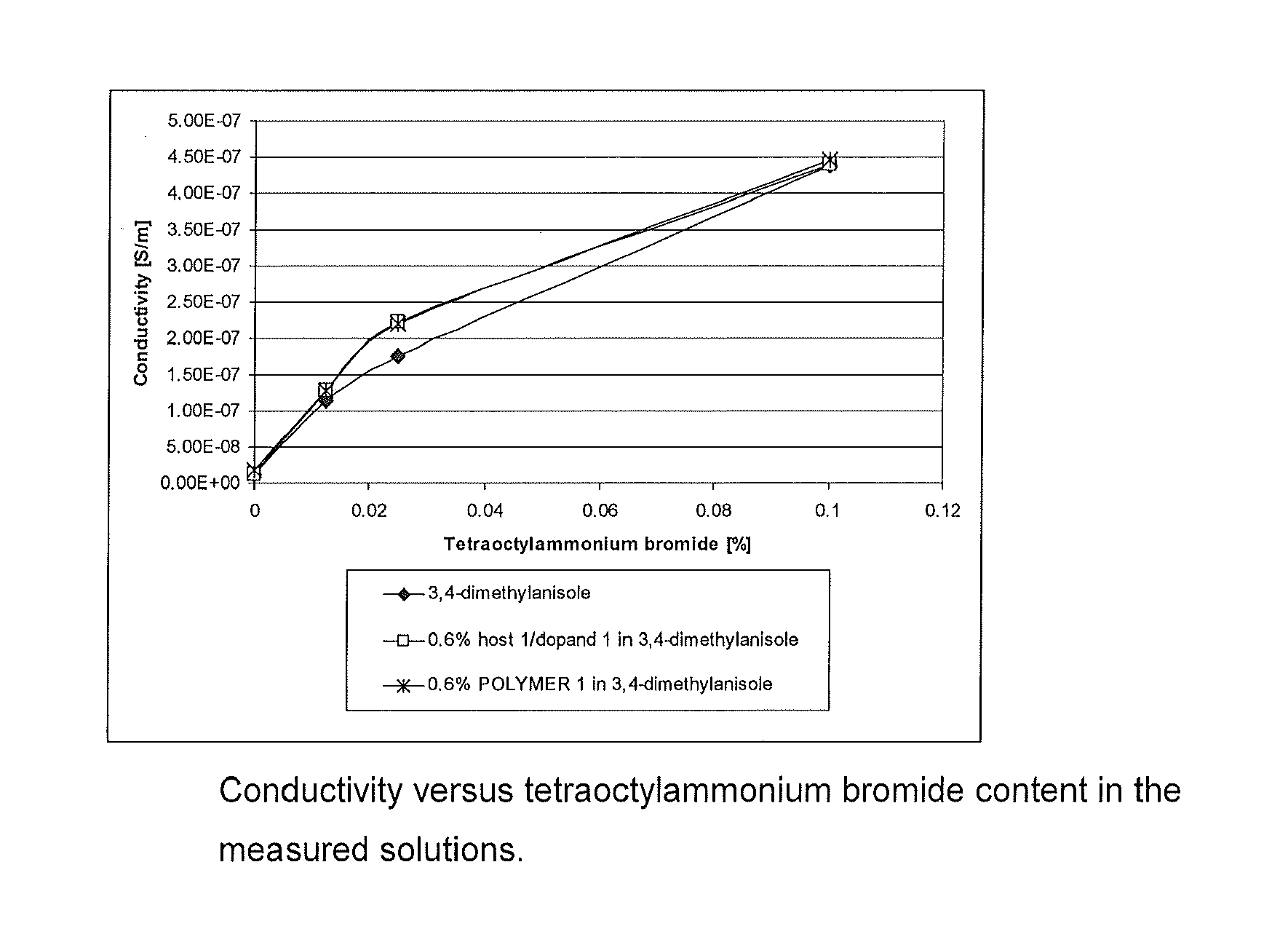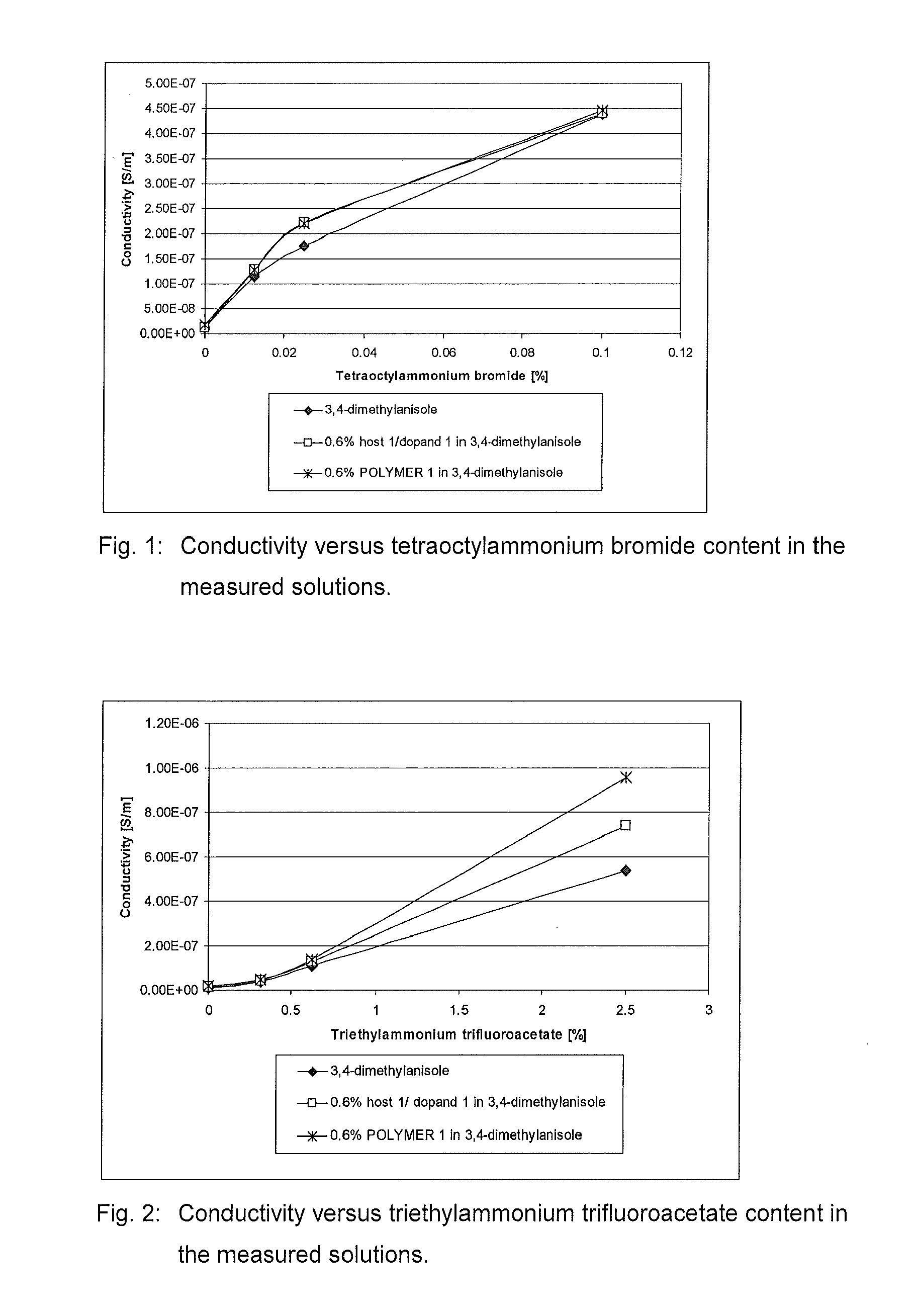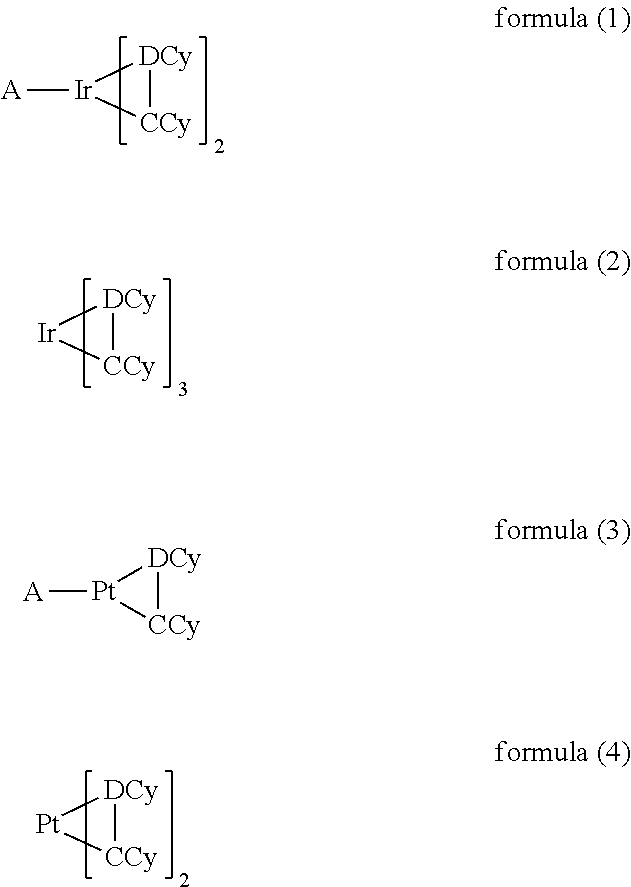Conducting formulation
a technology of conducting formulation and formulation, applied in the direction of non-metal conductors, triarylamine dyes, conductors, etc., can solve the problems of static charge buildup, fire or explosion, electrostatic discharge, etc., and achieve the effect of increasing the conductivity of the formulation
- Summary
- Abstract
- Description
- Claims
- Application Information
AI Technical Summary
Benefits of technology
Problems solved by technology
Method used
Image
Examples
working examples
[0086]The following materials were used in the working examples:
[0087]3,4-Dimethylanisole, tetraoctylammonium bromide and trifluoroacetic acid were purchased from Sigma-Aldrich.
[0088]Triethylamine was purchased from VWR.
[0089]Tributylammonium trifluoroacetate was obtained by adding a 1:1 molar ratio of tributylamine and trifluoroacetic acid to the solution. First tributylamine was added to the solution followed by trifluoroacetic acid.
[0090]Triethylammonium trifluoroacetate was obtained by adding a 1:1 molar ratio of triethylamine and trifluoroacetic acid using the method above.
[0091]Conductivity (C) was obtained from calculated resistivity p using the following equations:
C=1ρ[S / m],whereρ=RAl=R×1k=Rk[Ωm],
and the cell constant k=I / A was determined from the cell dimensions, where I was the distance between the electrodes and A was the area of electrodes and R=V / I [Ω].
[0092]Measurements were performed by placing each solution into a cylindrical measurement cell of known dimensions. The...
example 1
[0094]The resistance of o-xylene, tetraoctylammonium bromide in o-xylene, tributylammonium trifluoroacetate in o-xylene, 3,4-dimethylanisole, tetraoctylammonium bromide in 3,4-dimethylanisole and triethyl-ammonium trifluoroacetate in 3,4-dimethylanisole were measured and the conductivities were calculated. The results are presented in Table 1 and displayed as a function of the concentration in FIGS. 1 and 2.
TABLE 1LiquidAdditive and its concentrationconductivitySolvent[wt. %][S / m]air0 (control)1.19 × 10−12o-xylene0 (control)1.55 × 10−9o-xylenetetraoctylammonium bromide,2.70 × 10−80.025o-xylenetributylammonium4.73 × 10−8trifluoroacetate, 1.03,4-dimethylanisole0 (control)1.14 × 10−83,4-dimethylanisoletetraoctylammonium bromide,1.07 × 10−70.01253,4-dimethylanisoletetraoctylammonium bromide,1.76 × 10−70.0253,4-dimethylanisoletetraoctylammonium bromide,4.38 × 10−70.13,4-dimethylanisoletriethylammonium4.00 × 10−8trifluoroacetate, 0.31253,4-dimethylanisoletriethylammonium1.10 × 10−7trifluo...
example 2
[0096]
[0097]0.6 parts of Polymer 1 (c.f. Example 6 in EP 1741148) were dissolved in 99.4 parts of 3,4-dimethylanisole (0.6% of Polymer 1 in 3,4-dimethylanisole).
[0098]The resistance of Polymer 1 solution, tetraoctylammonium bromide in Polymer 1 solution and triethylammonium trifluoroacetate in Polymer 1 solution were measured and the conductivities were calculated as described in Example 1. The results are presented in Table 2 and displayed as a function of the concentration in FIGS. 1 and 2.
TABLE 2LiquidAdditive and its concentrationconductivitySolution[wt. %][S / m]0.6% w / w POLYMER 10 (control)1.86 × 10−8in 3,4-dimethylanisole0.6% w / w POLYMER 1tetraoctylammonium bromide,1.29 × 10−7in 3,4-dimethylanisole0.01250.6% w / w POLYMER 1tetraoctylammonium bromide,2.20 × 10−7in 3,4-dimethylanisole0.0250.6% w / w POLYMER 1tetraoctylammonium bromide,4.47 × 10−7in 3,4-dimethylanisole0.10.6% w / w POLYMER 1triethylammonium4.85 × 10−8in 3,4-dimethylanisoletrifluoroacetate, 0.31250.6% w / w POLYMER 1trieth...
PUM
 Login to View More
Login to View More Abstract
Description
Claims
Application Information
 Login to View More
Login to View More - R&D
- Intellectual Property
- Life Sciences
- Materials
- Tech Scout
- Unparalleled Data Quality
- Higher Quality Content
- 60% Fewer Hallucinations
Browse by: Latest US Patents, China's latest patents, Technical Efficacy Thesaurus, Application Domain, Technology Topic, Popular Technical Reports.
© 2025 PatSnap. All rights reserved.Legal|Privacy policy|Modern Slavery Act Transparency Statement|Sitemap|About US| Contact US: help@patsnap.com



